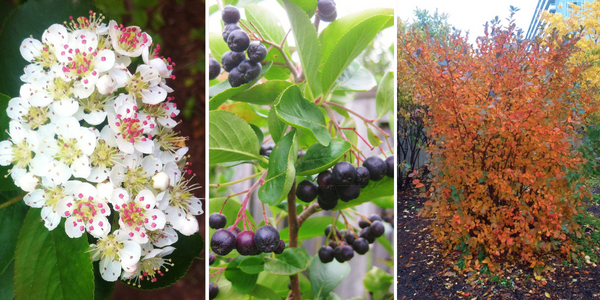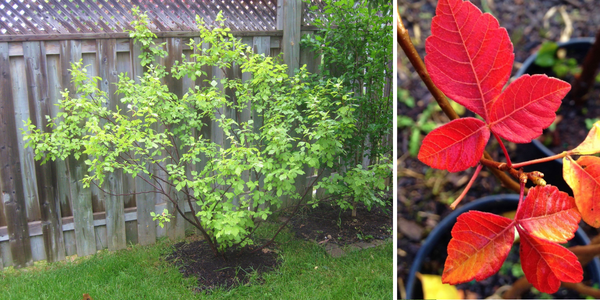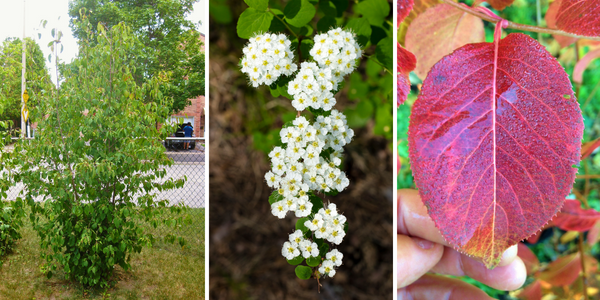Homes in newly developed neighbourhoods often have compacted soil due to construction equipment. You can tell if your soil has been disturbed from construction if it is hard to dig into and has little to no visible organic matter (that dark layer near the top of soil ). Compacted soils are lower in biodiversity as they support fewer beneficial soil microorganisms responsible for providing organic material and nutrients . These soils also have trouble absorbing rain and snowmelt, which leads to flooding and soil erosion due to runoff. By planting native species however, you can help revitalize your soil conditions, increase biodiversity levels and increase your soil’s water retention capabilities to help mitigate flooding.
If you are looking to add some greenery to your new yard but do not know which species would do best in your soil , here are four native shrubs we recommend for houses in new developments that can tolerate compacted soil conditions.
Black Chokeberry (Aronia melanocarpa)
Black chokeberry is a great option for smaller yards as it typically grows up to five feet tall and wide . It is known for its striking fall foliage, which makes it a great option for adding vibrant colour to new yards. This shrub is also a great choice for bird lovers as the berries make it a popular treat for migrating birds. It grows best in full or partial sun and can handle a range of soil types.

Fragrant Sumac (Rhus aromatica)
Fragrant sumac grows up to six feet wide and four feet tall, which makes it great for creating a lower privacy screen. As its common name implies, this shrub has aromatic foliage as well as beautiful colour in the fall. Fragrant sumac is adaptable to a wide range of sunlight and soil conditions, making it an excellent planting choice around newly constructed houses.

Nannyberry (Viburnum lentago)
Nannyberry is a taller growing shrub, reaching up to eight feet in width and 15 feet in height. This shrub does well in full sun and can tolerate a variety of soil types. Nannyberry forms a dense thicket, which makes this an excellent choice for those who desire privacy.

Common Ninebark (Physocarpus opulifolius)
Common ninebark is a medium growing shrub, reaching an average height and spread of six feet. This size also makes the shrub ideal for privacy! As its common name implies, the shrub’s characteristic feature is its bark, which is shiny and smooth when young but develops into multi-coloured exfoliating strips as it matures.

Recent construction can disturb soil quality but by planting native species that can tolerate compacted conditions, you can help revitalize your yard while adding beauty, privacy and biodiversity. For more tips on how to improve the quality of your new development soil, click here. LEAF offers a variety of hardy native trees and shrubs through our subsidized Backyard Tree Planting program. Check out our Homeowners page to get started on tree planting and our Shrubs, Garden Kits and Pawpaws page to order shrubs that will thrive in your new location!
Sarah G is the Residential Planting Programs Field Assistant at LEAF
LEAF offers a subsidized Backyard Tree Planting Program for private property. The program is supported by the City of Toronto, the Regional Municipality of York, the City of Markham, the Town of Newmarket, the Regional Municipality of Durham, the Town of Ajax, the Township of Brock, the Municipality of Clarington, the City of Oshawa, the City of Pickering, the Township of Scugog, the Town of Whitby, Ontario Power Generation and Ontario Trillium Foundation.
